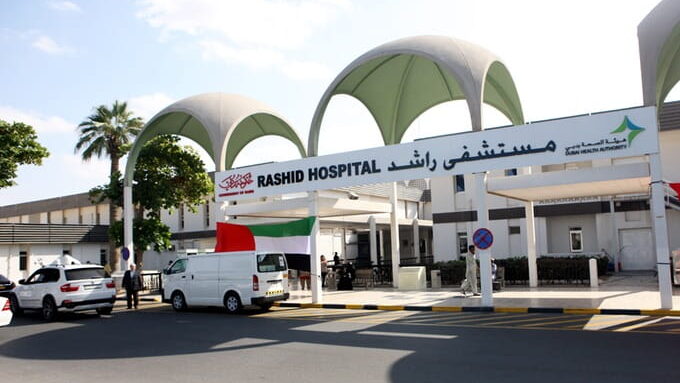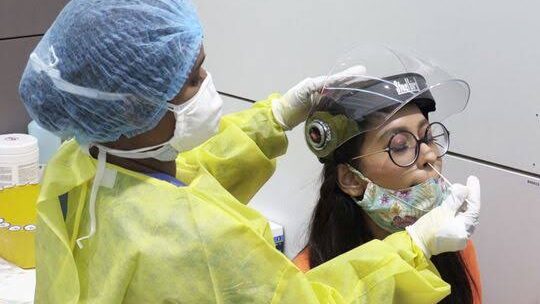In the wake of the global COVID-19 pandemic, countries around the world have implemented various measures to curb the spread of the virus, protect public health, and ensure the safety of citizens and visitors alike. Among these measures, COVID-19 testing has played a crucial role in identifying and isolating infected individuals, enabling authorities to take swift action to prevent widespread outbreaks.
In Dubai, one of the UAE’s busiest ports, Port Rashid has been an important focal point for the implementation of COVID-19 testing, especially for travelers, cargo personnel, and visitors. Port Rashid, located on the Dubai coastline, is not only a vital commercial port but also a major cruise terminal, welcoming thousands of passengers annually. With the resurgence of international travel and trade, it became essential to maintain the highest standards of safety and ensure that those passing through Port Rashid are protected from potential infection.
This article explores the COVID-19 testing processes at Port Rashid, the importance of testing in such a high-traffic area, the procedures in place to ensure smooth and safe operations, and the role it plays in maintaining public health within Dubai and beyond.

The Significance of Port Rashid in the UAE’s Economy and Tourism
Before delving into the details of COVID-19 testing at Port Rashid, it’s important to understand the port’s role in the UAE’s economy. Port Rashid is one of Dubai’s key commercial hubs, primarily known for handling cargo, including containers, bulk materials, and shipments of goods destined for the UAE and the wider Middle East region. In addition to its role in trade, Port Rashid serves as the main cruise terminal for Dubai, welcoming thousands of passengers aboard international cruise lines every year.
The port’s dual role in both trade and tourism places it at the heart of Dubai’s economic activity. The global nature of both cargo and cruise operations means that Port Rashid regularly sees large numbers of visitors, international crew members, and goods moving across borders. This constant movement, coupled with the nature of the pandemic, created a unique challenge for public health authorities to ensure that the port remained operational while minimizing the risk of COVID-19 transmission.

The Need for COVID-19 Testing at Port Rashid
COVID-19 testing at Port Rashid became an essential component of ensuring the health and safety of everyone using the port. The proximity to international travel and trade means that there is an increased risk of exposure to the virus, with passengers and crew members from various countries traveling through the port. With the COVID-19 pandemic still affecting countries worldwide, stringent measures needed to be put in place to safeguard the port’s operations.
Several factors contributed to the need for COVID-19 testing at Port Rashid:
- International Arrivals: The presence of international travelers, especially from countries with varying levels of COVID-19 spread, necessitated a controlled entry process. Cruise passengers and flight crews passing through the port could potentially bring new variants of the virus, making testing an important step in detecting and isolating any infected individuals.
- Commercial Cargo and Crew: Port Rashid is a key entry point for global trade. International shipments, both goods and crew members aboard cargo ships, could also serve as vectors for spreading the virus. Testing for all personnel entering the port ensured that no asymptomatic carriers unknowingly spread the virus to others.
- Large Foot Traffic: With both cargo personnel and passengers passing through the port on a daily basis, maintaining a safe and healthy environment was critical to preventing outbreaks. Routine COVID-19 testing helped identify cases early and prevent further transmission.
COVID-19 Testing Process at Port Rashid
The process of COVID-19 testing at Port Rashid is designed to be efficient and comprehensive, ensuring the safety of all passengers, crew members, and workers at the port. The testing process has been streamlined to accommodate the high traffic at the port, while ensuring compliance with health regulations and guidelines from the UAE government.
Here’s an overview of how the testing process works:
1. Pre-Arrival Requirements
Before arriving at Port Rashid, travelers and cargo personnel are often required to provide proof of a negative COVID-19 test taken within a certain period prior to arrival. This is part of the UAE’s broader efforts to limit the spread of the virus by ensuring that individuals entering the country or port facilities are not carrying the virus. The test may be a PCR (Polymerase Chain Reaction) test, which is the most widely accepted and reliable method for detecting COVID-19 infections.
For passengers aboard cruise ships, the requirement for pre-arrival testing ensures that only those who are healthy are allowed to disembark and interact with the local community. This minimizes the risk of community spread and ensures that the port remains a safe place for both local residents and visitors.
2. Testing on Arrival
Upon arrival at Port Rashid, individuals who do not have pre-arrival test results may be required to undergo a PCR test at one of the port’s designated testing centers. The UAE government has established efficient systems within the port to handle these tests, ensuring that individuals are tested in a timely manner without causing delays or congestion.
For cruise passengers, the testing process is typically conducted before passengers are allowed to disembark. This is particularly important for large cruise liners, which may carry thousands of passengers from multiple countries. Testing is done in designated areas within the port, and passengers are asked to wait for the results before being cleared to exit the terminal.
3. Results and Follow-Up
Once the test results are available, which usually take a few hours, passengers and port personnel are informed of the outcome. If a positive result is detected, individuals are required to follow quarantine protocols. The UAE government has established isolation facilities within the port or in nearby locations to ensure that anyone testing positive can be safely isolated until they are no longer contagious.
In the case of negative results, individuals are cleared to proceed with their plans, whether it’s embarking on a cruise, completing business transactions, or continuing their journey through the port. All passengers and personnel are encouraged to continue following preventive measures such as wearing masks, maintaining social distancing, and regularly sanitizing their hands.
4. Ongoing Monitoring and Safety Measures
In addition to testing, Port Rashid continues to implement a variety of safety measures to ensure the continued health and safety of all personnel. These include regular sanitation of the port facilities, temperature checks, and social distancing measures throughout the terminal.
Port Rashid authorities work closely with health officials to monitor the situation and adapt testing protocols based on the evolving nature of the pandemic. This flexibility ensures that the port can respond quickly to new developments, such as emerging COVID-19 variants or changes in government regulations.
The Role of Technology in Streamlining Testing
The UAE has made significant investments in technology to streamline the COVID-19 testing process at Port Rashid. Digital health pass apps, contactless entry systems, and data management software have all played a role in ensuring that the testing and clearance processes are as efficient and secure as possible. These technologies also allow for faster tracking and tracing of individuals who may have been exposed to the virus, helping to prevent potential outbreaks.
The Impact of COVID-19 Testing on Port Rashid Operations
COVID-19 testing at Port Rashid has had a positive impact on the port’s operations. By ensuring that only those who are free from the virus are allowed to enter and leave the port, testing has helped to maintain public health standards and ensure the smooth flow of both commercial and tourism-related activities. Furthermore, the testing protocols have increased the confidence of passengers and crew members, knowing that health and safety measures are being strictly followed.
With the global recovery from COVID-19 underway, Port Rashid has set a precedent for the safe resumption of international travel and trade. The implementation of COVID-19 testing measures at the port has provided a model for other major ports and travel hubs around the world.
Conclusion
COVID-19 testing at Port Rashid has become an integral part of the port’s efforts to protect public health while ensuring the continued operation of one of Dubai’s most important trade and tourism hubs. Through a combination of pre-arrival testing, on-site PCR tests, quarantine protocols, and advanced technology, the port has managed to maintain a high standard of safety. As the UAE continues to navigate the challenges posed by the pandemic, Port Rashid’s approach to COVID-19 testing stands as a testament to the country’s commitment to public health, safety, and efficient operations.
Do follow Uae stories for more Updates
Eid Holidays 2025: A Time of Celebration, Reflection, and Family in the UAE













